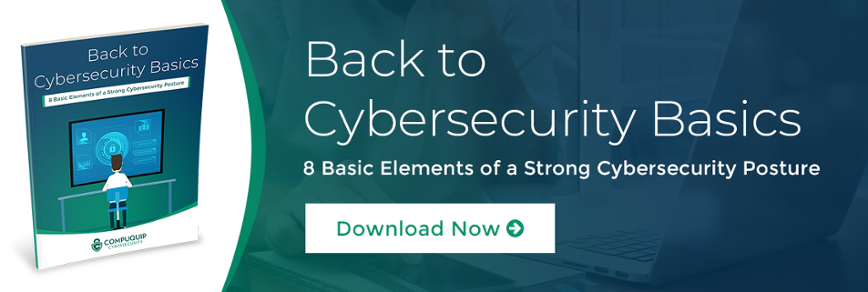Is Your Cybersecurity Posture Strong or Weak?
If you read enough blogs about cybersecurity (including some of the ones we’ve posted in the past), odds are that you’ve come across the term “cybersecurity posture” at least once before. What is cybersecurity posture? Cybersecurity posture is, as noted by the FICO blog, a measure of an organization’s “overall cybersecurity strength” and it “expresses the relative security of your IT estate, particularly as it relates to the internet and its vulnerability to outside threats.”
The thing about cybersecurity posture is that, despite the relatively simple definition outlined above, the concept itself can be incredibly complicated. There are a lot of things that go into making a company’s cybersecurity posture strong or weak. To help you assess your company’s cybersecurity, here are a few things you might want to check:
Overall Cybersecurity Awareness in the Organization
How aware is everyone in your organization when it comes to cyber threats and security vulnerabilities? The term “human firewall” is often used to describe the human element of any company’s cybersecurity architecture—but all too many organizations neglect to improve the cybersecurity awareness of their people. This goes for both the frontline employees who use the internet for their work and handle sensitive customer information as well as the top-level execs who guide the company.
A company with a strong cybersecurity posture should have a program in place to make their employees and leaders more aware of cybersecurity issues so they avoid common cybersecurity architecture mistakes like giving out unfettered access to sensitive systems and data to every employee. A corporate culture that encourages cybersecurity awareness is more likely to avoid making basic mistakes that create security vulnerabilities.
So, it’s important to find ways to assess how aware your employees are of common cybersecurity issues (and company policies regarding the use of IT resources) and build a “cyber-aware” culture. This can be done in a variety of ways, such as:
- Sending imitation phishing emails to see if employees fall for them;
- Working cybersecurity training into employee onboarding;
- Holding meetings specifically to raise awareness of major cybersecurity events and issues in your industry; and
- Making sure your top-level leaders demonstrate good cybersecurity practices so everyone knows that standards are being applied evenly.
That last bullet is important because it helps avoid setting an unfair double standard for upholding the company’s cybersecurity posture.
How Well Developed is Your Company’s Disaster Recovery/Business Continuity Plan?
Even if your company has a great cybersecurity architecture replete with cybersecurity-aware employees and the best security tools, things can still happen. A hacker might succeed in uploading a ransomware program to your computers, an employee might accidentally delete a batch file containing all of your billing data, or a natural disaster might destroy your primary data center.
Disaster recovery and business continuity planning is a necessary step for minimizing the costs and impacts of events that could prevent you from being able to access mission-critical resources and data. Companies that lack a plan for recovering from sudden catastrophic data and resource loss are leaving themselves open to cyber threats like ransomware and distributed denial of service (DDoS) attacks.
If you don’t have a disaster recovery solution, it’s important to set one up as soon as possible. If you do have a disaster recovery plan in place, you should test it to see how quickly it can restore lost data and resources, as well as how much data is lost when the solution is enacted—is it a few minutes, hours, or days of information?
How Does Your Cybersecurity Architecture Manage Access to Resources?
A mature cybersecurity program should make accessing important resources relatively simple for the users who need those resources and only those users. It should not allow every user on the network to freely access every database and resource—that would create an enormous security vulnerability that attackers could easily exploit.
Additionally, a strong cybersecurity posture often involves using two factor authentication or multifactor authentication (2FA/MFA) to verify that the people attempting to access system resources are the right ones. Having multifactor authentication makes it harder for attackers to spoof a legitimate user’s access credentials—instead of simply being able to guess or steal a user’s password and username, the attacker would also need another form of authentication, such as an authentication token, the user’s personal device for accessing the network, or even biometrics to gain access.
It is significantly more difficult for an attacker to steal a physical authentication token or fool a biometric verification system than it is to guess or steal a user’s password—which is why using multifactor authentication helps to improve a company’s cybersecurity posture.
These are just a few of the things that you should consider when assessing whether your cybersecurity posture is strong or weak. If you need help making your company’s cybersecurity posture stronger, reach out to the cybersecurity experts at Compuquip! Or, check out our Cybersecurity Basics Guide at the link below:

